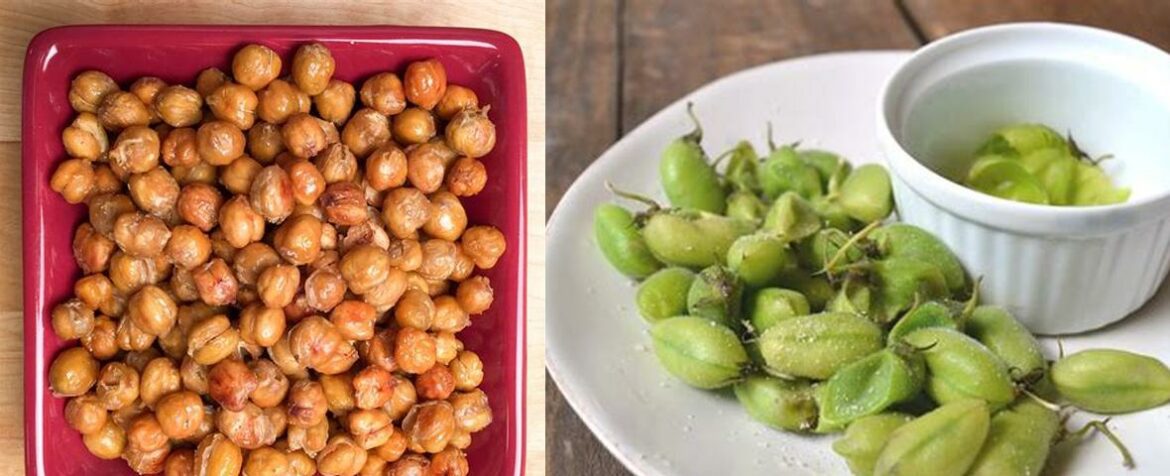What does garbanzo beans taste like: Are you curious about the taste of garbanzo beans? Well, you’re in luck! In this blog post, we’re going to unravel the delicious mystery of garbanzo beans and explore their unique flavor profile. Whether you’re a seasoned foodie or a curious cook, this article will satisfy your taste buds and leave you craving for more. So, buckle up and get ready to embark on a culinary adventure with garbanzo beans – the versatile legume that’s taking the culinary world by storm. Get ready to discover why garbanzo beans are truly a culinary gem with endless possibilities.
Chickpeas: A Nutritious and Versatile Culinary Delight
In the realm of culinary exploration, chickpeas, also known as garbanzo beans, occupy a prominent position. These humble legumes, with their distinctive round shape and creamy beige hue, have captivated taste buds and nourished bodies for centuries. Join us on a culinary journey as we delve into the fascinating world of chickpeas, uncovering their unique flavor profile, versatility in cooking, and remarkable nutritional value.
A Taste of Chickpeas: Earthy, Nutty, and Mildly Bean-Like
What does a chickpea taste like? This seemingly simple question leads us to a symphony of flavors. Chickpeas possess a characteristic bean-like taste, yet their flavor is remarkably mild and unobtrusive. They blend seamlessly with other ingredients, allowing their subtle charm to enhance rather than overpower dishes. Some liken the taste of chickpeas to that of cannellini or pinto beans, with their earthy and nutty undertones.
Cooking Styles: Shaping the Final Flavor
The final flavor of chickpeas is a testament to the culinary alchemy that occurs during cooking. Whether simmered in stews, roasted in ovens, or blended into creamy dips, the cooking method significantly influences the taste and texture of these versatile legumes. Mashed chickpeas, for instance, take on a remarkable resemblance to mashed potatoes, boasting a gooey and grainy texture that delights the palate.
A Superfood Packed with Nutritional Goodness
Beyond their culinary appeal, chickpeas are revered as a superfood, brimming with an array of essential nutrients. They are a rich source of protein, providing essential amino acids for tissue repair and growth. Their high fiber content promotes digestive health and satiety, aiding in weight management and reducing the risk of chronic diseases. Furthermore, chickpeas are replete with minerals such as manganese, folate, iron, phosphorus, and magnesium, contributing to overall well-being and vitality.
Dried vs. Canned: A Matter of Convenience and Flavor
Chickpeas grace our kitchens in two primary forms: dried and canned. Dried chickpeas, while requiring a longer preparation time involving overnight soaking or pressure cooking, offer a more intense flavor and a higher concentration of nutrients. Canned chickpeas, on the other hand, provide convenience and ease of use, requiring only a brief rinse before incorporating them into culinary creations.
Cooking Methods: Unlocking the Culinary Potential of Chickpeas
The culinary versatility of chickpeas is truly remarkable. They thrive in a myriad of dishes, from hearty salads and savory stews to creamy dips and crunchy snacks. Salads, for instance, find a delightful companion in chickpeas, their mild flavor harmonizing with crisp vegetables and tangy dressings. In stews, chickpeas lend a comforting heartiness, absorbing the rich flavors of broths and spices. Dips, such as the classic hummus, showcase the creamy texture of chickpeas, while roasted chickpeas make for a satisfying and nutritious snack.
Conclusion: A Culinary Gem with Endless Possibilities
Chickpeas, with their mild yet distinctive flavor, versatility in cooking, and abundance of nutrients, stand as a culinary gem. They have earned a well-deserved place in kitchens worldwide, inspiring chefs and home cooks alike to create dishes that nourish both body and soul. Whether enjoyed in salads, stews, dips, or snacks, chickpeas continue to captivate taste buds and enrich our culinary experiences.
FAQ about Garbanzo Beans
Q: What do garbanzo beans taste like?
A: Garbanzo beans, also known as chickpeas, have a mild and unobtrusive flavor with earthy and nutty undertones. They blend well with other ingredients and enhance dishes without overpowering them.
Q: How does the cooking method affect the flavor of garbanzo beans?
A: The cooking method significantly influences the taste and texture of garbanzo beans. Simmering them in stews or blending them into creamy dips can enhance their flavor, while roasting them can give them a satisfying and crunchy texture.
Q: Do mashed garbanzo beans have a different texture?
A: Yes, mashed garbanzo beans have a gooey and grainy texture that is similar to mashed potatoes. This texture adds a delightful element to various dishes.
Q: Are garbanzo beans versatile in cooking?
A: Yes, garbanzo beans are highly versatile in cooking. They can be used in stews, salads, soups, dips, and even as a substitute for meat in vegetarian dishes. Their adaptability allows them to complement a wide range of flavors and cuisines.
Q: Are roasted garbanzo beans a nutritious snack?
A: Yes, roasted garbanzo beans make for a satisfying and nutritious snack. They are packed with protein, fiber, and various vitamins and minerals. Roasting them brings out their natural nutty flavor and adds a delightful crunch.
Q: What are the nutritional benefits of garbanzo beans?
A: Garbanzo beans are a nutritious culinary delight. They are an excellent source of plant-based protein, fiber, and essential minerals such as iron, magnesium, and potassium. They also contain antioxidants and have been linked to various health benefits, including improved digestion and heart health.


